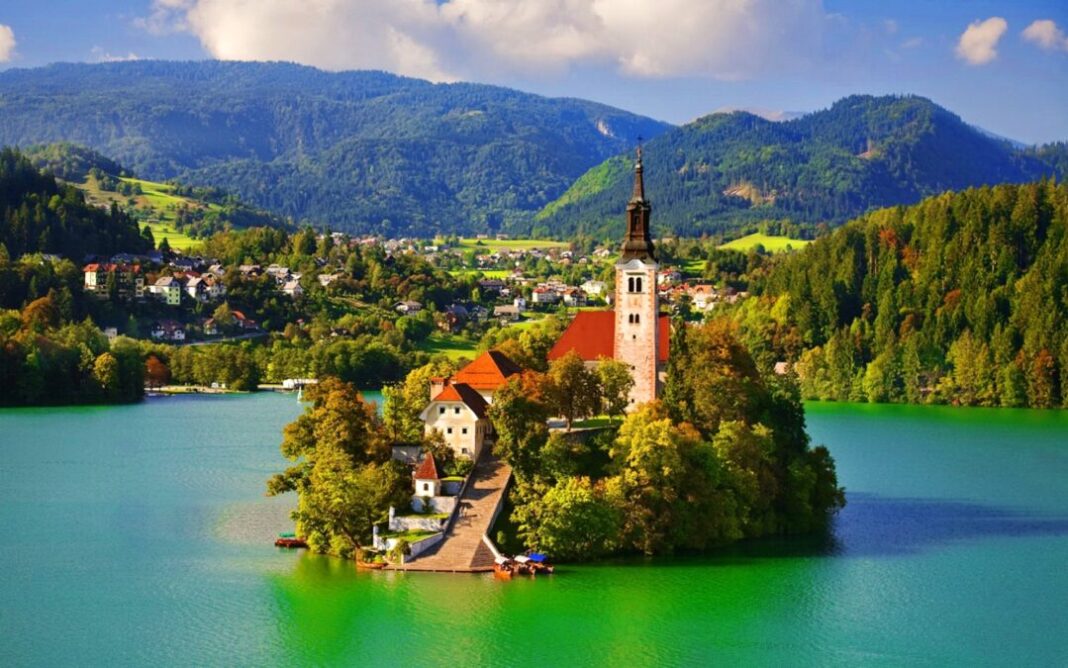Leisure Pursuits In Bled (Slovenia)
1. AQUAPARK ATLANTIS:

Atlantis Aquapark opened its doors to its visitors not so long ago – in 2005. It is located on the territory of the largest shopping center in Slovenia – BTC City, so you can easily combine shopping with water entertainment. The park with an area of 20,000 sq. m consists of several open and closed zones with swimming pools, saunas, water slides. In total, Atlantis has 16 pools (six large, six special-purpose, four children’s): an adventure pool, a wave pool, an open-air pool for relaxation, an open-air and indoor thermal pool, an open-air pool next to the sauna, cascades, a relaxation pool, two pools with jacuzzis, children’s pools.
The outdoor pool is the largest pool in the thermal complex, demonstrating its charm to visitors on sunny days, as its stainless steel surface reflects the rays in a special way on swimmers. The wave pool, the second largest pool in Adventure World, guarantees real pleasure. “Sauna World” is a separate area where everyone can enjoy a steam bath in one of 15 saunas. The thermal zone “Thermal Temple” offers true pleasure, leisurely swimming in cascading pools with salt water or comfortably settling down on the terraces.

The children’s water entertainment zone is also worth mentioning. Schoolchildren can slide down two 140-meter slides with special effects, and for the little ones there is a 15-meter open slide. For water games, there is a separate children’s pool with sprinklers and cannons. Also, kids can swim or play with their parents in another pool with a depth of 60 cm. In the warm season, children enjoy a carefree outdoor pool of 32 square meters and a depth of 30 cm, which is specially designed for the youngest visitors to Adventure World.
According to the rules of the water park, children under three years old must wear a waterproof diaper. Children under seven years of age may only visit the pools and play under adult supervision. For those who are hungry, there is a self-service restaurant in the water adventure zone, ice cream is sold at several points, and a healthy vitamin cocktail will be prepared for you in the thermal zone.
2. LJUBLJANA ZOO:
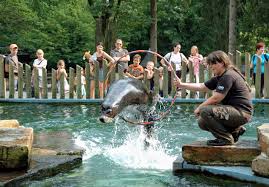
When on holiday or passing through Ljubljana with children, be sure to visit the city zoo. As practice shows, many parents, having planned a trip and allocating only a couple of hours to get to know it, spend the whole day here with their children. Ljubljana Zoo is located on the outskirts of the city, in the southern part of the Tivoli-Rožnik-Šišenski hill nature park. The total area of the zoo is about 20 hectares, and its inhabitants are about 500 animals. Due to its location in a forest park zone, a walk around the zoo will be comfortable in any weather, even on the hottest days.
Ljubljana Zoo is remarkable in that most of the animals are in natural conditions, and not in closed cages. But even if there are enclosures, they are spacious, and the animals do not look like tortured “prisoners”, as is often the case in our local zoos. Children will certainly be interested in visiting the incubator with chicks, the pets’ area, and watching a show with sea animals. Some animals are allowed to be petted. By the way, here you can not only watch the feeding, but also take a direct part in this process, having purchased a special coupon in advance. You exchange it for food and, in the presence of zoo workers, offer the animal a snack.
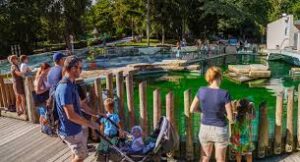
On the official website, as well as in the zoo itself, you can see the feeding schedule and choose an animal with which you would like to communicate closer. As a rule, zoo guests can watch the feeding of a California sea lion, an elephant, an eastern white pelican or farm animals. Guided tours and a visit to the zoo are also available for those who would like to learn more about animals, learn about preserving and saving the planet.
You can become a zookeeper for a day, meet your favorite animal, celebrate a birthday, enjoy a tour of the zoo or take a photo on a guided photo safari, and in the summer even spend the night in tents at the zoo! Every weekend, and daily in July and August, all kinds of educational games, entertainment and excursions are organized for children, allowing them to get to know the inhabitants of the park better. Another favorite place for children is the playground with a view of giraffes and pelicans. While the children are frolicking, parents can relax in a nearby café and discuss their future plans for visiting other equally interesting excursions and attractions in Ljubljana.
3. LABYRINTH PARK :
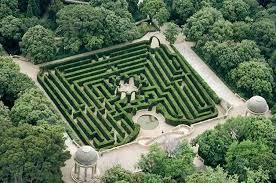
The Labyrinth Bled theme park opened in 2011 and has become popular among both holidaymakers and local residents of the Bled resort in just a few years. A giant labyrinth made of natural plants is located on two hectares. It consists of three sections: corn, forest and grass. Numerous tangled paths from a bird’s eye view form cheerful patterns and animal figures, which the creators of the labyrinth change every year. Upon arrival at the labyrinth, at the information point you will receive a park map with all the routes, interactive and educational stations marked.
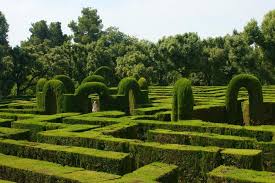
In addition to the main goal of the labyrinth – to get lost and find the right exit – along your way you will encounter a large number of information points where you can learn a lot of interesting and useful things about the surrounding nature. In addition, several interactive stations will allow you to have fun and relax before continuing your further route through the labyrinth. Among the most popular entertainments are a wooden xylophone, an attraction with an optical illusion, a puzzle game. With the help of such information and entertainment stops, you and your children will not only learn a lot of new and exciting things about this area, but will also be able to feel like a part of this corner of nature. In addition to individual visits, the park accepts organized groups, here you can celebrate a child’s birthday or hold team games.
4. PREDJAMA CASTLE:
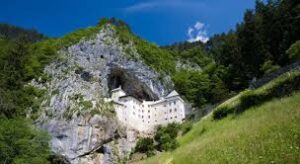
High above the outskirts of the village of Predjama, which is in Slovenia, Predjama Castle reigns – a truly monumental and majestic building. If your child dreams of knightly adventures, you should definitely take him to this wonderful place. Predjama Castle is located high on a steep cliff, relatively close to the Postojna Cave. No matter what time of year you come to this place, your imagination will be amazed by the landscape surrounding the castle. In the warm season, there is a period of lush flowering, in autumn nature is dressed in colorful clothes, and in winter the sparkling silver of the snow cover blinds and sets a romantic mood.
The first mention of the mysterious and impregnable Predjama Castle dates back to 1202. Both in those distant years and today, at an altitude of 123 meters, there is a monumental structure, the romanticism of which is added by the Lokva River flowing below. The main knight’s hall is a kind of center of the interior ensemble of the castle, the dining hall is made in the Gothic style, and on the third floor of the building is the kingdom of the Renaissance. Here you can see all the hunting trophies of the last owner of the castle – Prince Windischgratz. The history of the castle is no less interesting than its appearance and interior. One of the most famous inhabitants of this place was and remains the knight Erasmus of Predjama.
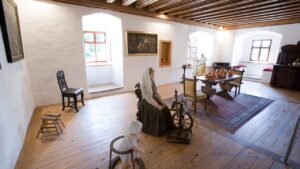
It was this brave man who organized an uprising against the autocracy in the 15th century. Thanks to this act, Erasmus remained in folk legends and tales. Old people say that there is a secret passage in the fortress that connects the old castle with the surface. It was through it that the knight and his vassals received provisions during the siege of the imperial troops. The Slovenes honor their history, and they still remember the glorious knight. Every year, a real medieval knight’s tournament is held in Predjama Castle, which bears the name of Erasmus. Every year, knights from different countries gather under the walls of the castle and measure their strength. This is a beautiful costumed spectacle: here you will meet beautiful ladies in dresses in the fashion of the time, and townspeople with banners, and musicians playing drums and trumpets.
And, most importantly, you will see with your own eyes that the competition of warriors is a very impressive spectacle! Your brave little knight, if lucky, will even practice fencing and archery. You can also stroll through the local fair, bargain with the vendors, buy jewelry, various fabrics and old tools as souvenirs. Bringing home gifts made by local craftsmen is a great idea! After the knight’s tournament, you will be invited to a village festival, where you can eat delicious food and watch the locals sing and dance. You and your young traveler will see and learn all this and much more on an excursion to Predjama Castle. If you come here between May and September, you will be able to visit the cave located underneath it.
5. POSTOJINSKA JAMA:
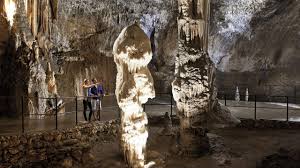
If your child dreams of the mysterious past of the Earth, is interested in archeology and underground fossils, then you should definitely visit one of the largest and most mysterious caves in Slovenia – Postojna Jama. Do not be confused by the word “jama” in the name, in fact, in translation from Slovenian “jama” means “cave”. This miracle of nature is a grandiose underground formation in the karst zone. Needless to say that an excursion to Postojna Jama is extremely popular with tourists from other countries? The cave, located on the outskirts of the city of Postojna, is a real underground labyrinth. Have you already read the book about Tom Sawyer with your young traveler? Remind him of the contents of that very chapter where poor Tom and his girlfriend Becky got lost in a similar dungeon and only miraculously managed to get out.
After this, the child will be doubly interested in exploring the branches and halls of the Slovenian cave. Postojna Cave was built by nature itself, or to be more precise, by the waters of the Pivka River. Over the course of thousands of years, the vaults of the cave and its rich filling were formed. And you will be convinced that it is truly unique as soon as you cross the threshold of the dungeon. The grandiose labyrinth, which was discovered and explored in the middle of the 20th century, stretches for twenty-five kilometers and consists of large and small halls, tunnels, descents, ascents, corridors and passages. You should not be afraid for your safety – the cave is perfectly equipped to receive guests. Visitors to the Cave can explore the tunnels and halls on foot or by narrow-gauge train, and look into the farthest corners of the cave.
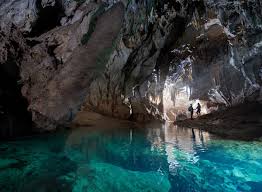
The tourist route covers 5 km (this is the largest length of a cave space open to tourists in the world), the first two of which you will travel on a tour train. You will probably be interested to know that initially the train carriages were pushed by guides, at the beginning of the 20th century a gas locomotive was installed, and after 1945 it was replaced by an electric one. You will get incredible pleasure wandering through many underground rooms of various shapes. The largest and most famous of them is the Conference Hall. It was given its name for a reason: the hall was used for receptions and balls as soon as the cave was opened to visitors. Luxurious decoration, walls decorated with intricately curved smooth stone – all this creates an atmosphere of solemnity and sets a serious tone. Its size and excellent acoustics also give the room weight and monumentality – several thousand guests can easily be accommodated here. The walls of the cave halls are amazing: it seems that some of them are cast from metal, others are carved from noble yellow ivory, and others are covered with a centuries-old layer of dust. The Pit is dominated by huge columns supporting the vaults.
Their intricate shape and unusual decorations made of icicles attract attention. Stalagmites grow from the floor of the cave, stalactites hang from the ceiling. More than one millennium must pass for them to meet each other – after all, these new formations grow extremely slowly: only a few centimeters per century. Can you imagine how ancient the decorations in the cave are? The famous inhabitant of the Postojna Cave is the European Proteus. The ancient Slovenes took this animal for a baby dragon. In fact, it is an amphibian, a modern inhabitant of underground lakes. Locals call it “fish man”. When descending into the cave, it is worth keeping in mind that it is quite cool down there – no higher than 10 degrees Celsius. Therefore, be sure to stock up on warm clothes and do not forget to take a waterproof raincoat with you, which will help you hide from the underground drip.
